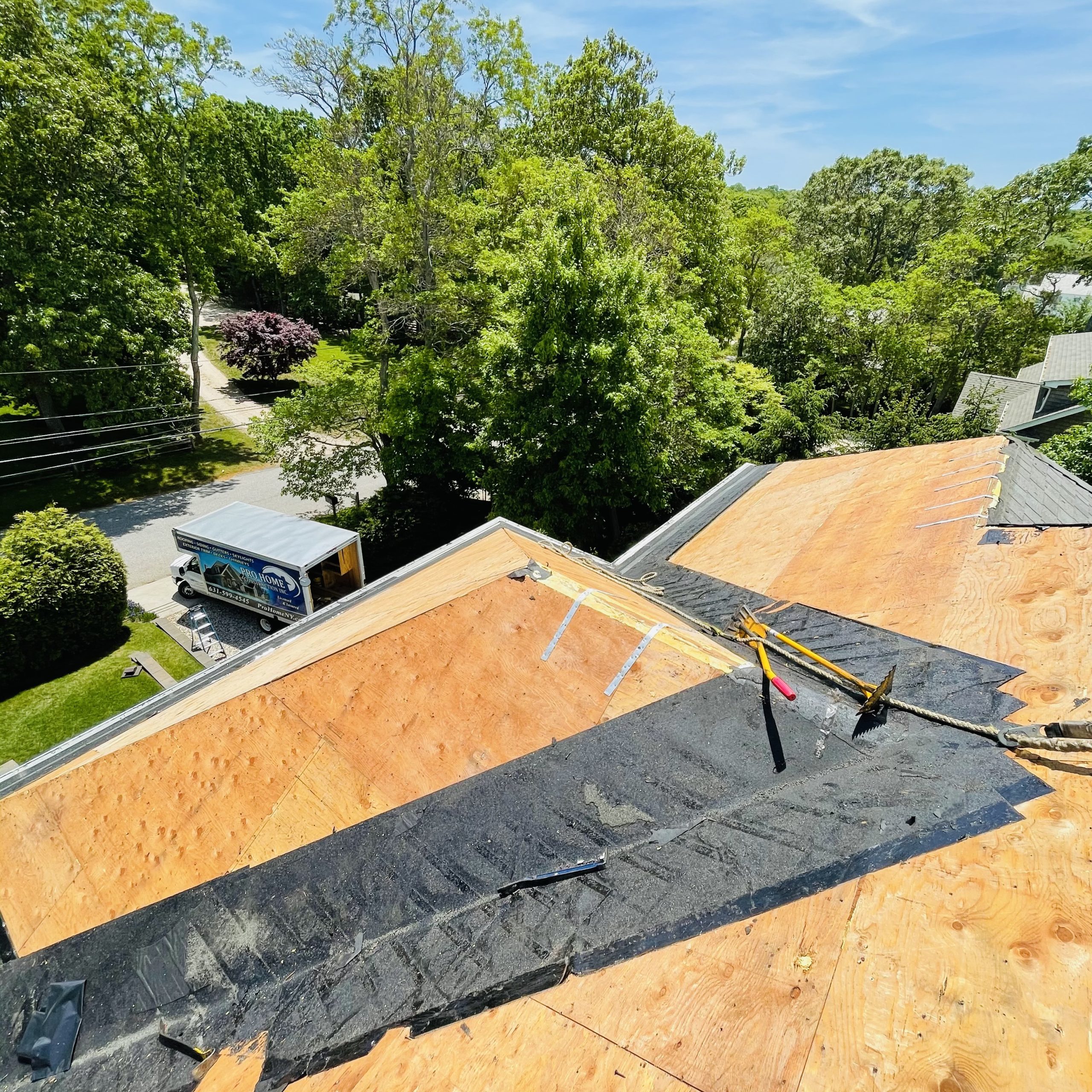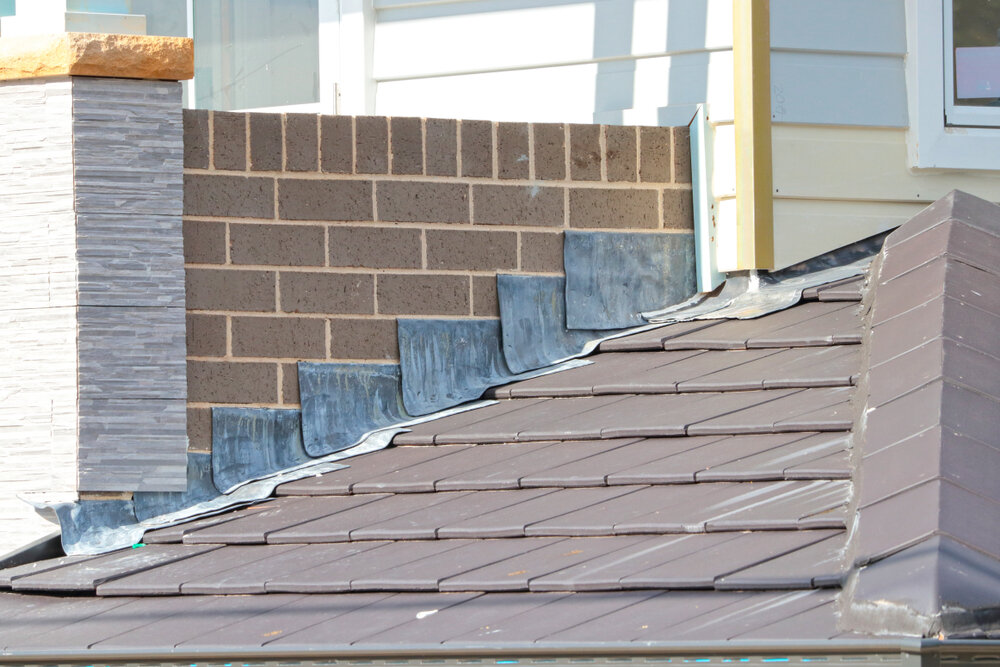When To Replace a Roof

When To Replace a Roof
A roof is a vital part of any home or building. When it is in good shape, it can protect the structure from damage from the elements and increase its curb appeal.
If your roof is starting to show signs of wear and tear, it’s time for a roof repair or replacement. Often, a roof that is losing shingle granules is at the end of its lifespan.
Leak Investigation – When To Replace a Roof
During a roof replacement, it’s important to perform an investigation of the leak. This can help you determine the exact cause of the leak and how much damage it has caused.
Leaks can be difficult to detect, and if the source of the leak isn’t immediately obvious, you might have to do some detective work to find it. For example, you may need to look for blisters on the roof or cracks along the flashing. You may also need to inspect the step flashing around windows, dormers and other areas where roofs meet exterior walls.
Another way to spot a leak is by looking for water stains and dark marks on ceilings or walls. These stains can be quite visible, especially during heavy rains, so you need to pay attention to them if you notice any.
Stains can sometimes be hard to identify, but they usually have a strong smell that is characteristic of mold or rot. This is because a leaky roof can promote mold growth within the affected area.
Once you’ve spotted a leak, use a flashlight to shine light into the area and see if there are any signs of water stains or marks. If you see a noticeable stain, call for an inspection right away to prevent further damage from occurring.
In addition, you should check the attic for any water stains or mold growth. This is a particularly important place to check because the roof leak is likely to enter this area before it goes into the living space.

Common Signs You May Need a Roof Repair
As one of the most important and visible parts of your home, your roof protects you and your family from the elements. However, roofs are susceptible to damage and need repair on a regular basis to keep your home safe.
Roofing is an investment in your home, and should last for decades if properly maintained. When it starts to show signs of failing, it’s time to replace your roof to make sure you get the most value out of your investment and avoid costly repair bills down the road.
Shingles that are curled, clawed, or missing are often signs that your roof is nearing its end of life. They’re usually caused by extreme temperatures, improper installation, poor ventilation, or age, and should be corrected as soon as possible to avoid further deterioration and further damage to your roof.
Bumps along the ridges of your roof are another sign that your roof is about to fail. The bumps indicate that there are gaps between the shingles on your roof and may be allowing water to seep into your home.
Bent metal around sky lights or chimneys are also signs that your flashing is compromised, and should be replaced as soon as possible to prevent leaks in your home.
Moss that collects in the shaded corners of your roof is also a sign of trapped moisture, and should be removed with a stiff brush. If the moss isn’t removed, this could lead to rot underneath your roof and a complete roof replacement will be needed.
If you notice any of these signs on your roof, it’s time to call in a professional for an inspection and a quote for roof repair or replacement. Getting these repairs taken care of early will save you money in the long run, and avoid more expensive issues like mold, mildew, or condensation problems that will only require larger and more costly roof repairs down the road.

Faulty or Failed Flashing
A roof is a complex structure, and the flashing that lines the edges of the roof and its seams is a vital component. It is used to protect the building from leaks in places like valleys and where roof slopes meet other structures, such as a chimney or skylight.
When a flashing is damaged, it allows water to leak through. This is why you should check the roof for signs of damaged flashing before calling a roofing contractor to fix it.
Flashing is made of metal strips that are installed around all the seams and edges of a roof to prevent leaks. They are also commonly used in areas where a roof meets another structure, such as a chimney or vent.
Depending on where the flashing is located, there may be different types of material or installation methods that need to be considered. This is why it is a good idea to have an experienced contractor perform the roofing installation.
A faulty or failed flashing is one of the most common causes of home leaks, and it is a problem that must be addressed as soon as it becomes apparent. If it’s not addressed, the damage will continue to worsen, and the whole roof and home will be more susceptible to damage from water and rain.
A faulty or failed flashing can be repaired by a homeowner, but this usually only lasts for a short time before it needs to be replaced entirely. It is best to have a professional complete this work for you, as it is a delicate part of the roof that requires experience and skill to repair correctly. A professional will be able to find the source of the issue, and fix it for you.
Roof Debris
During a roof replacement, there will likely be lots of debris that the crew will need to remove. These can include branches, leaves, construction materials and other items.
It is important to take care of these things before they cause damage to the roof. Debris can easily get into gutters and downspouts, causing water to pond on the roof, which can lead to leaks, mold growth, rotted building elements and other problems.
Additionally, these clogged gutters can also block rain from properly draining the roof, creating holes that can leak. This can result in large bills for energy consumption and repairs.
In addition, this debris can be a home for many critters and pests that love to nest on top of your roof. These could be squirrels, raccoons or birds.
If left on the roof, these critters can also chew up shingles and other roofing materials, leading to costly repairs. This can happen over time and is especially damaging if the weather is particularly stormy or harsh.
Furthermore, a heavy accumulation of twigs and leaves can block the flow of water into your gutters. This can result in water leaking into your home, which can make the air inside your home damp and uncomfortable.
Finally, these clogged gutters can create a favorable environment for mold and mildew growth on the roof. This can create health issues and may even pose a safety hazard to your family.
This is why it is so important to get rid of this debris before a roof replacement takes place. It can save you from unnecessary damages and repairs, and it can make the process easier for the crew on the job site.
Algae on Roofing
Algae is a common problem for homeowners, and the dark streaks it produces can detract from your home’s curb appeal. It can also cause your roof to absorb more heat, which can lead to higher cooling expenses and may decrease the lifespan of your roof.
Most algae spores are airborne and travel on the wind. They settle on rooftops with a lot of moisture, like those that have overhanging trees or clogged gutters.
The most common type of algae found on asphalt roofs is a blue green strain known as Gloeocapsa Magma. The strain is hardy and can survive the conditions found in most US climates.
Once it grows on your roof, it eats away at the limestone filler in the asphalt shingles that protect your roof from rain and snow. This can damage the shingles and weaken their structural integrity, which may result in premature replacement of your roof.
Fortunately, there are some things you can do to prevent this issue from happening. First, trim back any trees that may shade your roof, as this can help to reduce moisture. You can also ensure your gutters are cleaned regularly and properly to remove accumulated debris and allow water to flow freely.
Another way to prevent this problem is to use Algae-proof shingles, which contain tiny flecks of copper that inhibit algae growth. These shingles are available in both asphalt and galvanized steel, and they can be installed on your home’s roof when it is time to replace your existing shingles.
If you notice any black streaks or dark spots on your roof, it’s best to call a professional for repairs right away. If you attempt to clean the algae yourself, it could cause more damage to your shingles, and it might even create a health hazard for you and your family.

